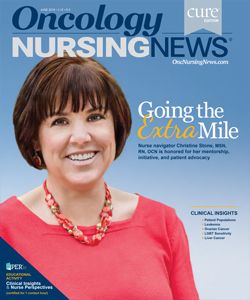Transform Your Presentation Into a Publication
Extend your professional repertoire with a published work based on a lecture or poster you have already created.
Did you recently give a talk at a health fair? Have you spoken to patient or family support groups? Have you taught chemotherapy class? Did you present a poster at the Oncology Nursing Society’s Annual Congress or another meeting? Have you done in-service work or presented at journal club for your peers?
These are all presentations, some formal and some informal, but all have the potential to serve as the basis for a work for publication. Each year, oncology nurses give hundreds of presentations to coworkers, colleagues, patient support groups, community groups, and executives, yet few transform their presentations into published pieces. A poster or podium/lecture presentation done at a local, regional, national, or international meeting may be a good candidate for publication.
Oncology nurses publish for many different reasons: to share information, give others insight, add to the body of nursing knowledge, develop professionally, and help improve practice. Whatever your motivation, do not let too much time pass before converting the presentation into a publication. Momentum is easily lost, and publishing after a long hiatus will require a new search of the literature.
TAKE ADVANTAGE OF A HEAD START
The thought of publishing can be overwhelming and intimidating for even the most experienced authors. The many reasons for not publishing include lack of time, fear of rejection, and not knowing how to start. The good news: Once you have prepared a presentation, at least half the work needed for a written piece is already done! The topic introduction, literature search, main points, visuals, conclusions, and implications for practice are often completed and polished. A straightforward approach to starting a written piece often involves elaborating on what was presented, and much of the time is spent on reworking components to accommodate the publication format.
STEP BY STEP
Many nurses who have a desire to convert a poster or presentation into a publication have no idea of how or where to begin. Follow these step-by-step instructions to get started.
Share Your Pro Tips
What’s your advice for converting a presentation into a publishable work?
Share with your colleagues on Twitter using hashtag #OncNurseConnect
Explore possible places to publish. Publication is no longer limited to journal articles. Oncology nurses can write for newsletters, health reports, social media, blogs, wikis, or websites. It is often easier to write a short, causal piece than a full-length journal article. Consider starting with patient education, which can often be a more natural way for a nurse to approach a topic.
Recruit a mentor. A writing mentor can provide direction on content, style, and publication requirements. Most important, mentors can offer support and encouragement. Consider asking a colleague (not a friend) who is a seasoned writer to serve as a mentor and coauthor. Mentors do not need to be experts on the subject but do need to be experts on writing and publication.
Revisit the main purpose. What was the presentation’s original purpose or message? What was the takeaway for participants who heard the lecture or read the poster? Determine if the same purpose and goal fit the publication you are considering.
Identify the main audience. Although presentations may be crafted to educate an audience comprised of individuals with diverse interests—eg, clinical, faculty, research, management—publications may have a narrower focus. Choose a primary audience, then seek a publication source to match.
Select the target publication(s). The best fit for publication depends on the topic, purpose, and audience. Identify 2 or 3 places to publish and then reach out to the editors to assess interest.
Request guidelines from your target publication(s). If an editor expresses interest in your work, ask for editorial guidelines to help shape your piece for their publication. From tone to style to length, the closer your finished piece matches the desired format, the more likely it is that it will be accepted for publication.
Identify changes for publication. Once you have gauged interest, determine which content from the presentation needs to be deleted or expanded for the written piece. Perhaps the publication will cover just 1 section of the presentation, or perhaps the presentation needs to be expanded upon. Start by incorporating any slide notes or scripts into the first draft of the manuscript.
Develop a timeline. Create a writing schedule with smaller deadlines to meet larger timelines. Try to write just 15 to 30 minutes a day or chunk content into small pieces. Have a mentor review small pieces instead of waiting until completion.
When oncology nurses publish, everyone benefits. Don’t say “I can’t write,” “I won’t add anything,” “It’s already been done,” or “I’m too busy.” Every oncology nurse has expertise to share with others. If publishing a presentation is not possible for your most recent presentation, be proactive next time. Plan in advance to publish your next presentation.
REFERENCES
1. Alpach G. Converting presentations into journal articles: a guide for nurses. Crit Care Nurs. 2010:30(2):8-15. doi: 10.4037/ccn2010788.
2. Schrager S. Transforming your presentation into a publication. Fam Med 2010:42(4):268-272.

Innovative Program Reduces Nurse Turnover and Fosters Development
Published: September 12th 2024 | Updated: September 12th 2024The US Oncology Network (The Network) has developed one of the most comprehensive programs in the nation to support the professional development and retention of new oncology nurses.



